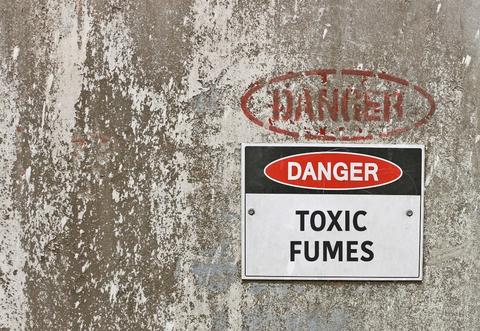Summary
The overarching goal of this project is to develop and disseminate measurement tools to improve the accuracy and reliability of chemical measurements related to defense and homeland security, e.g. measurements of toxic industrial chemicals (TICs), toxic industrial materials (TIMs), and chemical warfare agents (CWAs). To address these needs, NIST has worked with the chemical detection communities to develop ASTM standard specifications for chemical vapor detectors (ASTM E54: https://www.astm.org/COMMITTEE/E54.htm). Additionally, NIST provides reference data, reference methods and new tools to promote comparable measurements throughout the chemical detection communities such as for validation laboratories and for field testing.
Description

Chemical threat detection is a challenging problem. Contaminants must be accurately identified and quantified often in complex mixtures where non-toxic components can often obscure the measurement. Furthermore, highly toxic chemicals are problematic at low concentrations, requiring ultra-sensitive, real-time measurement methods to provide adequate warnings of dangerous environments. Improved public health and safety can be achieved by more effective chemical threat detection with improved sensitivity, accuracy, and reliability of the chemical detectors. This program addressed a wide variety of issues ranging from the chemical detector specifications and laboratory test methods to verify that commercial detectors meet manufacturer claims to low-cost field tests to verify that deployed detectors continue to operate. The program provides end users and government agencies with key decision tools for equipment procurement, equipment testing, and program planning to meet next generation needs.
NIST has developed standard specifications, test methods, reference data and reference methods to improve the evaluation of chemical detectors used by first responders. There are very limited numbers of reference materials that are appropriate for chemical detector testing and certification. The lack of reference materials is in part due to the reactive nature of the toxic industrial chemicals which makes it difficult and costly to deliver reference materials by conventional methods. Additionally, there is a great need to certify the detector performance under more realistic conditions where environmental interferents can impact the chemical measurements. As an alternative to reference materials, NIST has demonstrated that in-situ, optical probes are useful to directly monitor the test vapor streams in real-time, thus providing a mechanism to track the composition and concentrations of the test vapor streams at the chemical detectors while the detectors are under test. Additionally, NIST recently developed a Threshold Confidence Checker to provide a low-cost tool that enables end-users to verify that the M4 JCAD alarms at the original threshold level.
Major Accomplishments
- Completed a quantitative assessment of a drop-on demand ink-jet system for generating trace vapors.
- Validated performance of commercial CWA detectors
SELECTED PUBLICATIONS
-
Quantitative, Infrared Spectra of Vapor Phase Chemical Agents, S.W. Sharpe, T.J. Johnson, P.M. Chu, J. Kleimeyer, and B. Rowland, in “Environmental and Industrial Sensing”, Proc. of SPIE, 5085, 19 (2003).
- Performance Validation Strategies for Chemical Agent Detectors Based on Ion Mobility Spectrometry, P.M. Chu, C.S. Harden, M. Bishop, D.C. Meier, and M. Schantz, NISTIR 7326, National Institute of Standards and Technology, Gaithersburg, MD 1-13 (2006).
-
The Traceability of the Threshold Confidence Checker for the M4 JCAD, P.M. Chu, K.D. Benkstein, M.E. Staymates, W.S. Hurst, M. J. Carrier, J.M. Hall, NIST IR, Gaithersburg, MD, September 2010.
-
Voluntary Consensus Standards for Chemical Detectors, Pamela Chu and Charles Laljer, Defense Standardization Program Journal, Fort Belvoir, VA April/Sept 2012.
-
Method and Device for Validating or Calibrating a Chemical Detector at a Point of Use, P.M. Chu and J.R. Anderson, Patent No. US 8,347,685 B1, Jan 8, 2013.
-
Standard Specification for Handheld Point Chemical Vapor Detectors (HPCVD) for Homeland Security Applications, E2885-13, ASTM International, West Conshohocken, PA, June 2013.
-
Standard Specification for Stationary Point Chemical Vapor Detectors (SPCVD) for Homeland Security Applications, E2933-13, ASTM International, West Conshohocken, PA, July 2013.
-
Fourier Transform Infrared Absorption Spectroscopy for Quantitative Analysis of Gas Mixtures for Homeland Security Applications, K.D. Benkstein, W.S. Hurst, D.C. Meier, and P.M. Chu, Journal of Testing and Evaluation, ASTM International, Vol 44, No 1, January 2016.
-
Fourier Transform Infrared Absorption Spectroscopy for Quantitative Analysis of Gas Mixtures for Homeland Security Applications at Low Temperatures, D.C. Meier, K.D. Benkstein, W.S. Hurst, P. M. Chu, Journal of Testing and Evaluation, ASTM International, Vol 45, No 3, May 2017.

